
Essentials Of Unification Thought - The Head-Wing Thought

|
|
Essentials Of Unification Thought - The Head-Wing Thought |
|
II. Unification Epistemology (Part 2)
D. The Method of Cognition
1. Give-and-Receive Action
In Divine Principle, it is stated that "when a subject and an object are engaged in give-and-receive action within a being after having established a reciprocal relationship between themselves.... the energy necessary to maintain the existence of that being is produced. This energy provides power for existence, multiplication, and action." 32 Here "multiplication," in a wider sense of the term, means the coming into being, generation, increase, development. "Action" means movement, change, reaction, and so on. Since cognition means the acquisition or the increase of knowledge, it can be included in the concept of "multiplication" through give-and-receive action. Accordingly, the proposition can be established that .cognition takes place through give-and-receive action between subject and object."
"Subject" in cognition refers to a person with certain conditions, namely, interest in the object and prototypes; whereas "object" refers to all things with content (attributes) and form (form of existence). Cognition takes place through the give-and-receive action between these two parties.
2. Formation of the Four-Position Base
Give-and-receive action between subject and object always takes place centering on a purpose, and cognition occurs as a result of give-and-receive action. Therefore, cognition is made through the formation of a four-position base (Fig. 9-1).
The four-position base is composed of four positions, namely, subject, object, and the result. Each of these will be explained next.
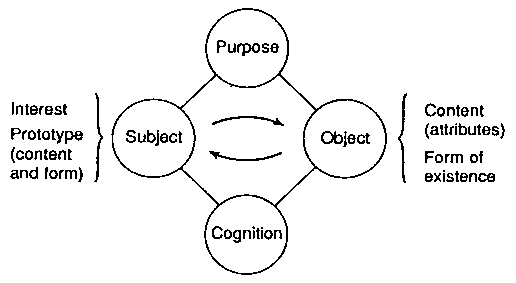
Fig. 9-1: Formation of a Four-Position Base in Cognition
a) Center
It is the purpose that becomes the center of give-and-receive action. In purpose there are the principle purpose and daily, ordinary purpose.
The principle purpose refers to the purpose of creation for which God created humankind and all things. From the perspective of the created beings, it is the purpose for which they were created. In God's purpose of creation, Heart (love) was the motivation for creation. Therefore, the original way of cognition for human beings is, also, to cognize all things with love as their motivation.
The purpose of creation (purpose for which a being is created) consists of the purpose for the whole and the purpose for the individual. Human beings' purpose for the whole in cognition is to acquire knowledge for the sake of serving neighbors, society, nation, and the world. The purpose for the individual is to acquire knowledge for the sake of the individual life of food, clothing, and shelter and cultural life. On the other hand, the purpose for the whole of all created beings, which are the objects of cognition, is to give knowledge and beauty to human beings and to give them joy by receiving dominion from them. The purpose for the individual of all things is to be recognized and loved by human beings, as well as to maintain its existence and growth. However, due to the human fall, things cannot fully fulfill their purpose of creation (the purpose for which they were created), and are "groaning together in travail" (Romans 8:22).
The daily purpose (or actual purpose) refers to the individual purpose based on the principle purpose, namely, the purpose of each person in his or her daily life. For example, a botanist observing nature will acquire knowledge from a botanist's position; a painter observing the same nature will probably acquire knowledge from the position of pursuing beauty. Also, an economist may try to acquire knowledge about nature from the viewpoint of conducting business by developing nature. In this way, even though the principle purpose of obtaining joy may be the same, the daily purpose for each individual person differs from person to person.
b) The Subject
In cognition, the subject's interest in the object is one of the requisites for the subject. Without interest, no correlative standard can be established, and no give-and-receive action can take place.
Consider, for instance, the case of a person walking down the street who happens to cross a friend's path. If the person's mind is deeply absorbed in thought, the friend may go by totally unnoticed. Also, a lighthouse attendant is not awakened by the noise of the waves, but does get awakened by the sound of a crying child, which may be much softer than the sound of the waves. From this we can conclude that the reason the noise of the waves is not perceived is that the lighthouse attendant is not interested in it; in contrast, the sound of the crying child is perceived because the keeper is interested in it.
On the other hand, it is also often the case that we cognize things by chance. An obvious example is that, even though we may not expect it, we may suddenly see lightning and hear the sound of thunder. In such a case, it might seem that the subject has no interest. Even in this case, however, interest is always at work, though, perhaps only unconsciously (or subconsciously). All of us remember the years of childhood, when we faced everything with a fresh sense of wonder and curiosity. This wonder and curiosity derive from interest. Further, when we visit a new place for the first time, we usually look at everything with a great deal of interest. As time goes by, however, we become familiar with the place, and our interest recedes to the subconscious mind. Yet, even then, interest is not gone completely, but is at work in the subconscious mind.
Another requisite for the subject is to have prototypes. No matter how much interest one may have in a given object, if one does not have an appropriate prototype, cognition will not take place. For example, when listening to an unknown foreign language, we will not understand what is being said. Also, when meeting a person never seen before, we will just feel that the person is a "stranger"; but if we have seen that person before, he or she will seem familiar.
Accordingly, in order for cognition to take place, the subject must always be equipped with prototypes, which serve as the standards of judgment.
c) The Object
As objects of cognition, there are all things in nature, as well as things, events, and persons in human society. According to the Unification Principle, all things were created as objects for the human being, and the human being was created as the subject to all things. The human being, who is the subject, exerts dominion with love over all things, the objects, whereby he or she engages in appreciation and cognition of them. Therefore, all things are equipped with elements that enable them to become objects of beauty and objects of cognition. Those elements are the attributes of things (which are the content) and the forms of existence of things (which are the form). Such "content" and "form" are requisites that all things must have. They are not something that things have acquired by themselves; rather, they are endowed to things by God.
The human being is the integration of all things and a miniature (microcosm) of the universe; therefore, as a microcosm, the human being is equipped with what corresponds to the content and form of all things.
d) The Result
When subject and object engage in give-and-receive action, centering on a purpose, a result comes into being. Here, in order to understand the nature of the result, we need to understand the nature of the four-position base. As explained in "Theory of the Original Image," the four-position base can be classified into four kinds: the inner identity-maintaining four-position base, the outer identity-maintaining four-position base, the inner developmental four-position base, and the outer developmental four-position base. Since cognition is basically the process of collating and uniting, through give-and-receive action, the "content and form" of the subject and the "content and form" of the object, cognition is a kind of identity-maintaining four-position base. On the other hand, in the case of the human activity of dominion, a developmental four-position base is formed.
Cognition and dominion form reciprocal circuits of give-and-receive action between human beings and all things. That is to say, the process of cognition is one circuit, and the process of dominion is the other circuit. So, let us examine the relationship between the developmental four-position base in dominion and the identity-maintaining four-position base in cognition. Dominion here refers to the exercise of human creativity; therefore, the four-position base in dominion is the same as the four-position base in creation, namely, developmental four-position base.
As explained in the "Theory of the Original Image," God created all things through the two stages of creation, namely, the formation of the inner developmental four-position base (i.e., the formation of Logos) and the formation of the outer developmental four-position base. In this process, first the inner developmental four-position base was formed, and then the outer developmental four-position base was formed. Thus, the order was "from the inner to the outer four-position bases." In contrast, in the formation of the identity-maintaining four-position base for cognition, first, the outer identity-maintaining four-position is formed, and then the inner identity-maintaining four-position base is formed. Thus, the order is "from the outer to inner identity-maintaining bases."
Then, more concretely, what exactly is cognition? This will become clear in the following explanation of the "process of cognition."
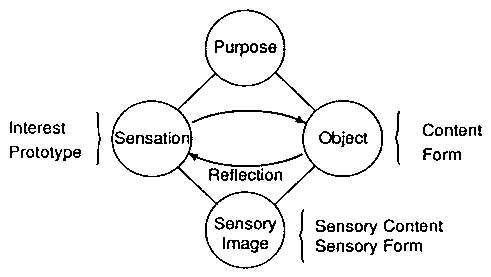
Fig. 9-2: Formation of the Outer Identity-Maintaining Four-Position Base
E. The Process of Cognition
1. The Sensory Stage of Cognition
In cognition, first the outer identity-maintaining four-position base is formed. Centering on a conscious or unconscious purpose, give-and-receive action between the subject (human being) and the object (a thing) takes place, and the content and form of the object are reflected on the sensory centers of the subject, forming an image, or an idea. This is the sensory content and sensory form, and is called the "sensory image" (Fig. 9-2). Even though the subject may have interest and prototypes at the sensory stage of cognition, the prototypes are not yet actively participating. The sensory content and sensory form formed at the sensory stage of cognition are only fragmentary images, which have not yet become a unified cognition of the object.
2. The Understanding Stage of Cognition
In the understanding stage of cognition, the inner identity-maintaining four-position base is formed through inner identity-maintaining give-and-receive action, and the fragmentary images transmitted from the sensory stage of cognition become a unified image of the object.
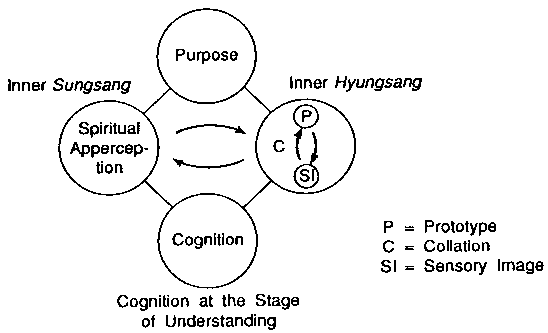
Fig. 9-3: Formation of the Inner Identity-Maintaining Four-Position Base
The purpose at the center of the inner identity-maintaining four-position base is the same as the purpose of the outer identity-maintaining four-position base at the sensory stage of cognition. This is a principle purpose and an actual daily purpose. What comes in the position of subject here is the inner Sungsang, namely, the functional part of the mind, which, in cognition, is the unity of intellect, emotion, and will. "Mind" refers to the union of the spirit mind and the physical mind, which is the "original mind" of human beings; this is different in dimension from instinct in animals. Thus, here, we use the special term "spiritual apperception" to refer to the functional part of the mind in cognition, which means "the comprehensive function of sensation and perception of the united mind of spirit person and physical person." 33 In this way, the inner Sungsang functions as the spiritual apperception in cognition and works as the power to make judgment, but in practice, it also functions as subjectivity and works as the power to realize values.
Next, what comes in the -position of object in the inner four-position base? First, the sensory image, namely, the sensory content and sensory form that have been formed in the outer four-position base in the sensory stage of cognition, is transmitted to the position of the object in the inner four-position base, that is, to the inner Hyungsang. Then the protoimage and the form of thought (that is, the prototype) corresponding to the sensory content and sensory form are drawn by the spiritual apperception from within the memory. These two elements, namely, the sensory image and the prototype, form the inner Hyungsang.
Under these circumstances, give-and-receive action of the collation type takes place. This is so because the spiritual apperception, which is the subject, compares (collates) the two elements (i.e., the prototype and the sensory image) and makes a judgment as to their agreement or disagreement. Cognition takes place through this judgment, which is called "collation" in Unification epistemology. Thus, we come to the conclusion that cognition takes place through collation. Consequently, Unification epistemology becomes a "theory of collation" in terms of method, whereas Marxist epistemology was a "theory of reflection" and Kant's epistemology is "theory of synthesis."
Sometimes, however, cognition may riot be sufficiently well established through a single cognitive process (inner give-and-receive action) at the understanding Stage. 34 In such a case, inner give-and-receive action continues together with practice (i.e., experiments, observations, experiences, etc.) until a new, sufficiently clear cognition is obtained.
3. The Rational Stage of Cognition
Next is the rational stage of cognition. Reason refers to the ability to think by means of concepts and ideas. Reason operates as the function of judgment and conceptualization even in the understanding stage, but in the rational stage, new knowledge is obtained through reasoning on the basis of the knowledge obtained in the understanding stage.
After all, cognition in the rational stage is none other than thinking. This corresponds to the formation of Logos (a plan) through the inner developmental four-position base in the Original Image. Thinking takes place through give-and-receive action within the mind, which is collation-type give-and-receive action. That is, necessary elements are chosen from among the various ideas, concepts, mathematical principles, laws, and so on, already existing in the inner Hyungsang, and various mental operations are performed on those elements, such as association, separation, synthesis, and analysis.
These operations are performed on the foundation of the give-and-receive action of the collation type, that is, the comparison between idea and idea, between concept and concept and so forth. Knowledge increases through the repetition of such operations. In this inner give-and-receive action as well, the inner Sungsang functions as spiritual apperception. Cognition in the rational stage is the formation of the inner developmental four-position base (Fig. 9-4).
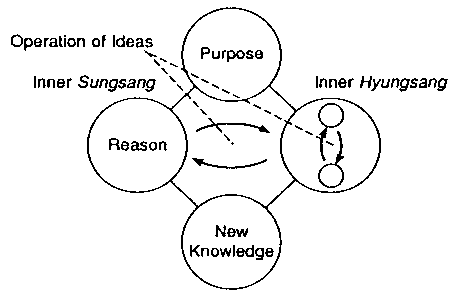
Fig. 9-4: Formation of The Inner Developmental Four-Position Base
In the rational state of cognition, acquisition of new knowledge takes place continually through completing each stage of judgment. That is to say, each new bit of knowledge that is obtained (completed judgment) is material for thinking transmitted to the inner Hyungsang, and is used for the formation of new knowledge in the next stage. In this way, knowledge develops. That is, knowledge develops by repeating the formation of the inner four-position base (Fig. 9-5).
The development of this kind of inner four-position base takes place together with practice. The result (new body) obtained through practice is passed on to the inner four-position base (the
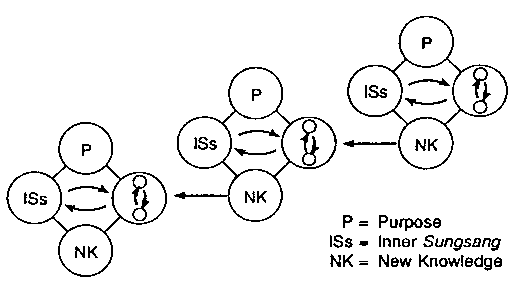
Fig. 9-5: Formation of Repetitive Inner Four-Position Bases through Reasoning
inner Hyungsang within the Sungsang), and is used for the acquisition of new knowledge. When new knowledge is obtained, its truth can be tested through yet another instance of practice. In this way, repetitive instances of practice, that is, repetitive formations of outer four-position bases, take place together with the development of inner four-position bases for cognition (Fig. 9-6).
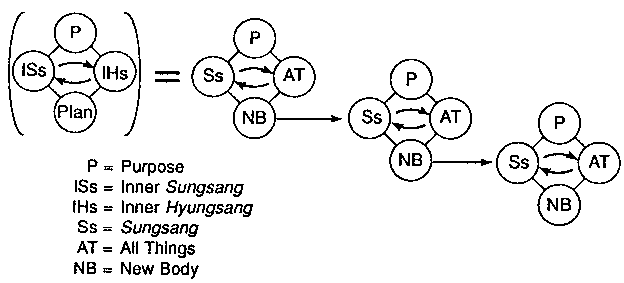
Fig. 9-6. Formation of Repetitive Outer Four-Position Bases Through Practice
F. The Process of Cognition and the Physical Conditions
Unification Epistemology is a theory based on the Unification Principle and Unification Thought. Therefore, even though this epistemology may contain points and terms different from those of traditional epistemologies, this does not mean that Unification Epistemology is incorrect. If, however, any assertion of Unification Epistemology turns out to be contradictory to established scientific theories, then Unification Epistemology will be nothing more than an unsubstantiated claim just as many past epistemologies have been, and its universal validity will not be ascertained.
Traditional epistemologies, namely, the empirical, rational, transcendental (Kantian), materialistic (Marxist) epistemologies, have proven to be theories that have nothing to do with scientific knowledge, in other words, they have proven to be in disagreement with established scientific views. Consequently, they have little persuasiveness today, in view of the great development science has achieved. This section offers evidence to show that Unification Epistemology is a valid theory from the standpoint of scientific knowledge as well. Those points will be discussed below.
1. Parallelism between Psychological Process and Physiological Process
Unification Thought asserts, based on its theory of the dual characteristics of the Original Image, that all beings have dual characteristics, namely, Sungsang and Hyungsang.
The human being is a dual being of mind and body, and the cells, tissues, and organs making up the human body are composed of mental and physical element as well. Furthermore, all human actions and operations are dual-which means that psychological and physiological actions are always at work in parallel. Therefore, from the perspective of Unification Thought, in cognition as well, psychological and physiological processes are always at work in parallel. This means that mental action occurs through the give-and-receive action between the mind and the brain (Fig. 9-7). Here, mind refers to the union of spirit mind (mind of the spirit person) and physical mind (mind of the physical person).
Wilder Penfield (1891-1976), a world-renowned authority in the study of the brain, compared the brain to a computer, saying that "the brain is a computer, and the mind is a programmer." 35 Another renowned researcher of the brain, John C. Eccles (1903- ), also said that the mind and the brain are different things, and that it is necessary to grasp the problem of the mind and body as the interaction between mind and brain. 36 Their assertions are in accord with the view of Unification Thought that the mental activities are made through the give-and-receive action between mind and brain.
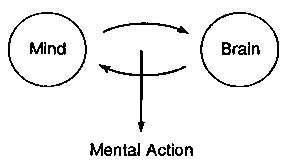
Fig. 9-7. Mental Action Through the Give-and-Receive Action between Mind and Brain
2. The Sources That Correspond to Protoconsciousness and Protoimage
Next, I will cite certain scientific views arguably that support the concepts of protoconsciousness and protoimage, which are unique to Unification Epistemology.
As explained before, protoconsciousness is the cosmic consciousness which has permeated the cells and tissues of living things, that is to say, it is life; and protoimage is the image reflected oil the protoconsciousness, which is a film of consciousness. Protoconsciousness is purposeful consciousness, and protoimage is nothing but information. This means that cells have purposeful consciousness and perform certain functions on the basis of information contained in them.
Let us verify protoconsciousness and protoimage from the standpoint of the theory of cybernetics. Cybernetics is the science of the transmission and control of information in living beings and in machines. In living beings, bits of information are transmitted through sense organs to the centers, which integrate them and send proper instructions to effectors (muscles). This is one of the phenomena of cybernetics in living beings.
When we look at a single cell, we can see cybernetic phenomena taking place within it. That is, a continuous repetition of the transmission of information from the cytoplasm to the nucleus and the response to it from the nucleus is made in a cell, whereby the cell exists and multiplies. Accordingly, we can find autonomy even in a single cell. The autonomy of a cell is none other than life and protoconsciousness.
The French physiologist Andre Coudet-Perrot, for example, explains in Cybemilique el Biologie that the cell nucleus, which has the source of the cell's information, gives instructions to the cytoplasmic organelles (mitochondria, Golgi complex, etc.) to carry out the chemical reactions necessary for the life of the cell. 37 The cell's information includes all the information concerning the anatomical shapes and essential functions of living beings. 38
Here, the following questions may arise. First, the code (information) must be decoded and memorized, but what is the subject that decodes and memorizes these codes? Second, in order for the cell nucleus to issue instructions to cause the chemical reactions necessary for the life of the cell, the nucleus must be accurately aware of the situation inside the cell. What is the subject of this awareness?
These questions cannot be answered from only the position of science (physiology) alone, since science deals exclusively with phenomenological aspects. Unification Thought, however, with its theory of dual characteristics, can clearly state that there is a purposeful element of Sungsang, namely, consciousness, working within the cell. The consciousness within each cell is protoconsciousness (inner Sungsang), and the information is the protoimage (inner Hyungsang).
3. Correspondence of the Psychological and Physiological Processes in the Three Stages of Cognition
As discussed above, the three stages of cognition are the sensory stage, the understanding stage, and the rational stage. According to cerebral physiology, there are physiological processes corresponding to the three stages of cognition.
The cerebral cortex can roughly be divided into three areas, namely, the sensory area, which receives signals from the sense organs; the motor area, which sends out the signals related to voluntary movements; and the association areas, which are divided into frontal, parietal, and temporal association areas. It is considered that the frontal association area is concerned with the functions of will, creation, thinking, and emotion; the parietal association area is concerned with the functions of perception, judgment, and understanding; and the temporal association area is connected with the mechanism of memory.
First, the information about sight, hearing, taste, smell, touch, etc., is transmitted through peripheral nerves to the sensory area of visual sense, auditory sense, gustatory sense, olfactory sense, and tactile sense (somatic sensory), respectively. The physiological process that takes place in the sensory area corresponds to the sensory stage of cognition. Next, the information from the sensory area is gathered in the parietal association area, where it is understood and judged. This corresponds to cognition in the understanding stage. Based on this understanding and judgment, thinking is made in the frontal association area, and creative activities are carried out. This corresponds to the rational stage of cognition. In this way, the three stages of cognition have corresponding physiological processes within the brain (Fig. 9-8). 39
4. Correspondence between Psychological Process and Physiological Process in the Transmission of Information
In the human body, there are functions constantly operating to receive various kinds of pieces of information from outside and from inside of the body, to process the pieces of information, and to respond to them. The stimulation received by a receptor (sense organ) becomes an impulse and passes through the afferent path of the nerve fiber to reach the central nerves. The central nerves process that information and send out an instruction, which is transmitted as an impulse through the efferent path of the nerve fiber to the effector which responds to it (Fig. 9-9).
When a response toward the stimulation takes place in a manner that is unrelated to consciousness at the higher center, we call that a reflex. The spinal cord, medulla oblongata, and midbrain, are reflex centers, sending appropriate orders in response to stimulation.
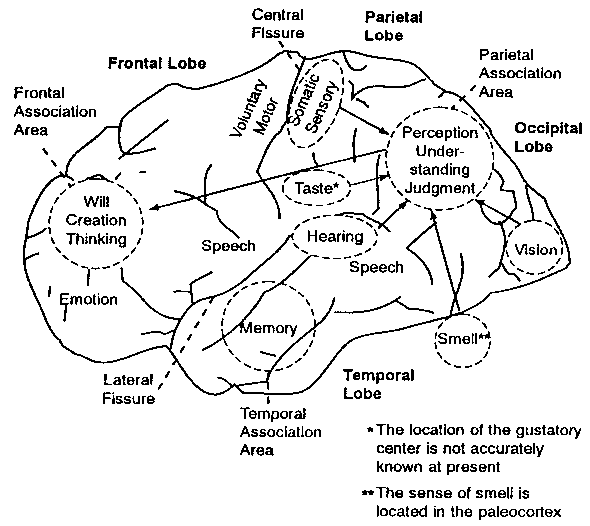
Fig. 9-8: Functional Areas in the Cerebral Cortex and the Three Stages of Cognition
Once a piece of information has entered die body through a receptor, how is it transmitted? The information that has entered through a receptor becomes a nerve impulse, which is an electric impulse. The nerve impulse refers to a change in the electrical potential of the membrane between the excited and non-excited parts of the nerve fiber. The nerve impulse moves along the nerve fiber. The change in the electrical potential that takes place at that moment is called "action potential."
The inside of the membrane of a nerve fiber is negatively charged in the unstimulated state, but when an impulse passes through it, the charge is reversed, and the inside becomes positively charged. This phenomenon takes place when sodium ions (Na+) flow into the membrane from the outside. Then, when potassium ions (K+) flow out from the inside of the membrane, the balance of charges is restored to its former state (i.e., a negatively charged state). In this way, change in electrical potential of the membrane takes place and moves along the nerve fiber (Fig. 9-10).
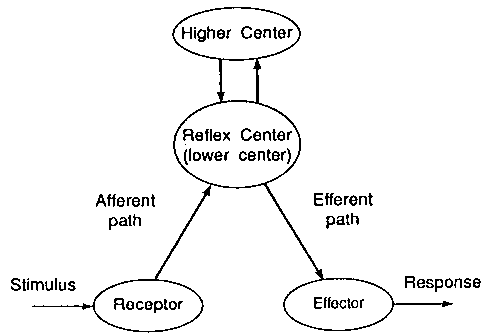
Fig. 9-9. Paths for the Transmission of Information in the Human Body
Next, how is the nerve impulse transmitted at the joint between neurons, namely, at the synapse? There the electrical impulse is converted into a discharge of chemical transmitter substances and moves through the gap in the synapse. When they reach the next neuron, the chemical process is again converted into an electrical process. In other words, an electrical signal in the nerve fiber is converted into a chemical signal at the synapse, and then, when it reaches the next neuron, it is converted back into an electrical signal. The transmitter substance in the synapse is said to be acetylcholine in motor and parasympathetic nerves, and noradrenaline in sympathetic nerves.
The mechanism for the transmission of information explained above may be expressed in a diagram as in Fig. 9-11.
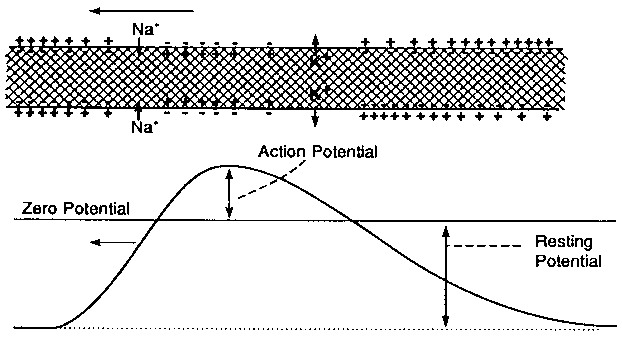
Fig. 9-10.- Transmission of a Nerve Impulse
Source: J. C. Eccles. The Understanding of the Brain (New York: McGraw-Hill Book Company, 1977), p. 23.
The above is the physiological process of the transmission of information, but from the perspective of Unification Thought, there is always a conscious process behind a physiological process. That is, behind the movement of the action current in the nerve fiber and the transmitter substances at the synapse, there is always protoconsciousness at work, perceiving the content of the information and transmitting it to the center. In other words, protoconsciousness can be seen as the bearer of information. Thus, it can be understood that the action current in the nerve fiber and the chemical material at the synapse are accompanied by protoconsciousness, which is the bearer of information.
5. Corresponding Aspects in the Formation of Prototypes
It has already been explained that the sources that correspond to protoimage and image of relation are the content of cells and tissues and the mutual relationships among these elements. I will call these the "terminal protoimage" and "terminal image of relation," respectively. On other hand, I call the protoimage and the image of relation that arise at the understanding stage of cognition the "central protoimage" and the "central image of relation."
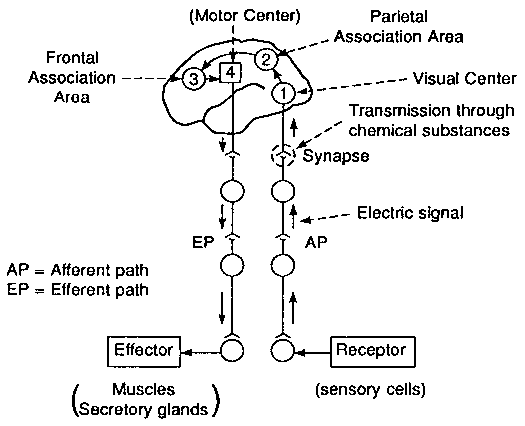
Fig. 9-11: Mechanism for the Transmission of Information between Neurons
In the process whereby the terminal protoimage reach the higher center through nerve paths, they undergo selection at each level of the central nervous system and are combined, associated, and arranged to form central protoimages. In the case of the terminal images of relation as well, they undergo selection at each level of the central nervous system and are combined, associated, and arranged to form the central images of relation, which, when they reach the cerebral cortex, become the forms of thought. Here, each level of the central nervous system stores the protoimages and images of relation on its own level.
Among the elements from which prototypes are composed, there are also the empirical images, in addition to the central protoimages arid forms of thought. These empirical images are the cognition (knowledge) gained through experiences and stored in the memory center. They constitute a part of the prototypes, which can be used for later cognition.
As information is passed on from the lower to the higher levels, the amount of information received in the central nervous system (input), and the amount given out (output) increase. At the same time, the ways of processing information become more inclusive and universal. This is similar to an administrative organization: the higher the level, the greater amount of information dealt with and the more inclusive and universal the way of processing that information.
In the highest center, namely, the cerebral cortex, the reception of information is none other than cognition; the storage of information is none other than memory; and the output of information is none other than thinking (conception), creation, and practice. The integration at the lower centers is similar, although it is different in dimension from the integration at the cerebral cortex. Purposeful integration by consciousness is exercised at each center. To put this in another way, at each level of the central nervous system, physiological integration is accompanied by mental integration. In other words, the physiological process of transmitting information (nerve impulses) in the central nerves is always accompanied by psychological processes of judgment, memory, conception, and so on.
As for the transmission of the image of relation (images of form), the fact that the processing of information becomes increasingly universal as it goes from the lower to the higher centers means that, as particular terminal images of relation are passed on to the higher centers, those images of relation gradually become universalized and generalized. When they reach the cerebral cortex, they are completely conceptualized into the forms of thought, or categories.
6. Prototypes and Physiology
Prototypes refer to the ideas and concepts possessed in advance by the subject at the time of cognition, and can be called memory as well. It has previously been explained that the human being possesses a priori prototypes (original prototypes) and empirical prototypes, which can be expressed-borrowing physiological expressions-as "hereditary memory" and "acquired memory," the latter gained through experience. 40
The "hereditary memory" which is the information concerning the cells and tissues of a human being as a living being, is considered to be stored in the limbic system-the part of the cerebrum that consists of the older cortex, covered by the new cortex. Then, from a physiological perspective, how and where is the "acquired memory" stored?
Memory can be divided into short-term memory, which lasts only a few seconds, and long-term memory, which lasts from several hours to several years. Short-term memory is considered to be based on electrical reverberating circuit. With regard to long-term memory, two theories have been proposed, i.e., the "neuron circuit theory" and the "memory substance theory." The neuron circuit theory is the view that each memory is stored in a particular network of neuron circuit, whose junctions (synapses) receive changes through the repeated nerve impulse. The memory substance themy is the view that such memory substances as RNA, peptide, etc., have something to do with each memory. However, recently the number of researchers who advocate the memory substance theory is decreasing. 41
As for the area in which the long-term memory is stored, it is considered to be- as follows: There is a part of the hinbic system called the hippocampus, which is located within the cerebrum. This hippocampus first plays the role in the initial processing of the information to be memorized, and then the memory is thought to be stored in the new cortex (temporal lobe) for a long time. 42 That is, memory is considered to be stored in the temporal lobe through die hippocampus.
Goudet-Perrot explains that in cognition, such memory (stored knowledge) is collated with the information of an object in the external world coming through the sense organs, and is judged: "The information received by the sensory receptors is collated with the knowledge that was acquired by the sensory center in the cerebral cortex and was stored in memory, and judgment is made." 43
This view is in accord with the position of Unification Thought that information coming from the external world is collated with prototypes (inner images), and is judged as to whether it is in agreement or in disagreement with the prototypes. 44
7. The Encoding of Ideas and the Ideation of Codes
In the process whereby a human subject cognizes an object, the information coming from the object, upon reaching the sense organs, turns into an impulse, which is a kind of code. The impulse, then, is ideated in the sensory center in the cerebral cortex and is reflected on consciousness as an image (an idea). This is the "ideation of a code." On the other hand, in the case of practice, an action is taken based on a certain idea. In this case, the idea becomes an impulse, passes through motor nerves, and moves an effector (muscle). This is the "encoding of an idea."
According to cerebral physiology, an idea comes into being through cognition and is stored in a specific area of the brain as memory, encoded as a particular pattern of combinations of neutrons. In order to recall a particular memory thus encoded, consciousness decodes the code and understands it as an idea. That is, in the storage and the recollection of memory, the "encoding of ideas" and the "ideation of codes" seem to be carried out. With regard to this matter, neuro-physiologists, M. S. Gazzaniga and J. E. LeDoux said the following:
Our experiences are indeed multifaceted, and it is our view that different aspects of experience are differentially stored in the brain. 45
We may be faced with the fact that memory storage, encoding, and decoding is a multifaceted process that is multiply represented in the brain. 46
That kind of mutual conversion between an idea and a code can be regarded as a type of induction phenomena arising between the Sungsang type mental coil, which carries the idea, and the Hyungsang type physical coil (neurons), which carries the code, just as electricity moves between the first coil and the second coil through induction. The mutual conversion of an idea and a code provides support for the assertion that cognition is carried out through give-and-receive action between psychological and physiological processes.
Download entire page and pages related to it in ZIP format
Table of Contents
Information
Tparents Home